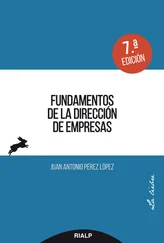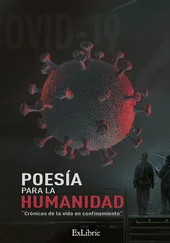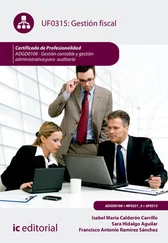Later on, we will discover the consequences of this difference. For the time being, it is sufficient to see that it is obviously a very different thing, for example, to organize a group of people so that each one may have certain foods, than it is to organize them so that each may satisfy (as far as possible) his appetite (as he sees fit) on the basis of the others' production capacities.
Clearly, although the formal organization may be a part, or aspect, of the latter, this latter goal is much more comprehensive, complex and complete than the former. This is not only due to the greater or lesser variety of the diet to be taken into account when defining purposes in the respective organizations, nor even to the greater degree of involvement required in the latter for defining the particular food products to be used, but, above all, to the greater interaction required between consumers and producers for the operation of the production process.
These points, and other similar ones, have direct consequences for the motivation of the organization's members, in their roles as consumers and as producers as well. This is so— and this is a basic difference between a technical system and an organism—because an organic model seeks to analyze the coordination of human actions not only by looking at their objective side (what they produce) but also at their subjective side (their greater or lesser appeal for the persons who perform them). It must be this way because the “efforts” or “actions” of the organization's members actually do affect their motivations, and it is precisely these motivations that the organization seeks to satisfy.
Within the organic model, the process of defining a purpose in an organism seeks not only to adapt it to its external environment by strategic planning, as in a technical system; this process also has to consider the organism's adaptation to what we might call its internal environment (which is the informal organization). In other words, the specific performance goals, determined by the process of purpose definition, seek not only external achievement but also acceptability by the people who have to achieve them (internal achievement). This acceptability is what guarantees the satisfaction of people's actual motivations, in so far as motivations are affected by what people are asked to do. For this reason, the process of purpose definition in an organism is basically a process of negotiation.
The communication process seeks not only to convey the information necessary for achieving the goals which have been set by means of the definition process. An additional feature of the communication process in an organism is its attempt to facilitate “upward communicationthat is, the transmission of information about the members’ actual motivations, so that members may influence the definition of purpose. The same could be said about lateral communication, which is usually necessary to define and specify the operating goals.
The motivation process is not assigned entirely to the incentive system. It is recognized that only some of the members' actual motivations can be satisfied by means of it. Function—or role—allocation in the production system is also an important part of the motivation process, as are participation and negotiation in the purpose-definition process.
Thus, it is apparent that the complexity of the purpose-definition, communication and motivation processes, as they appear in an organic model, is far greater than in a technical system. In the latter these processes are not only distinct, but separate. In an organism, they may be differentiated, but basically they are different aspects of the same process: the process of management.
It can therefore be said that the process of management in an organism consists of defining purposes while communicating and motivating at the same time. The decisions made in order to keep the organism in operation will normally affect what has to be done (definition of purpose), what has to be transmitted (communication) and the satisfaction of the persons participating in the organization (motivation).
When the organization is viewed as an organism, one no longer seeks more or less complicated rules for optimizing and maximizing particular parameters. This second type of model necessarily includes two different levels of objectives, which normally cannot be maximized simultaneously.
One of the levels includes the satisfaction of actual motivations in so far as it is caused by what is received from the organization. The other level includes the satisfaction of actual motivations in so far as it is produced by what is done in the organization. The simultaneous maximization of both levels can only be achieved under very particular conditions.
Think, for example, of the maximum satisfaction for a company's customers (the best product at the cheapest possible price) and compare that with the maximum satisfaction for the producers of a product (the product they most enjoy making at the greatest possible profit). The difficulty of simultaneously maximizing both levels is readily apparent. In fact, any attempt to do so would lead to the utopian or contradictory organizations we discussed earlier. We would be missing the real problem.
A realistic approach to the problem would start from the fact that there is a wide range of product and price combinations that are adequate to satisfy the actual motivations of both consumers and producers. Within this range, the organism is viable. Its viability would increase if any of the four variables involved (the product's value to the consumer, the product's affordability to the consumer, the attractiveness of making the product to the producer, the producer's earnings) were to increase without adversely affecting the others.
Even in this simple example we can see that by conceptualizing this interchange organically we bring to light possibilities that remain hidden when we merely consider it technically. Specifically, it seems impossible for earnings to grow without an adverse effect on the consumer's costs. However, there is nothing to prevent growth in the product's value to the consumer from being compatible with a parallel increase in the attractiveness of producing it to the producer (even aside from the case in which this occurs due to a technological change). Experience has verified that a great number of improvements in products or services have been achieved simply by increasing the motivation of the people who produce them.
through closer, often informal, contact with the users.
If one had to set a single goal for an organism, this could only be the growth of what we call the organism's viability, that is, its vitality. This growth would mean the organism's closer adaptation to the satisfaction of its members' actual motivations.
Anthropological model: The organization as an institution
An institution approaches the coordination of actions as a means of satisfying the real needs (or potential motivations) of the organization's members. An institution includes an organism: that is, it also organizes actual motivations (what individuals currently desire), in addition to its technical system. The difference with respect to an organism is to be found in the fact that it takes the organization to a deeper level than that of actual motivations.
The institution seeks to satisfy actual motivations, but in such a way that this satisfaction is not harmful and, as far as possible, is beneficial for all of the person's needs (that is, including those other needs that are not directly satisfied when actual motivation is satisfied).
Whereas in a technical system the only relevant variables are the things that are done, and in an organism the things that are done and how they are done are relevant, in an institution, in addition to these two levels, it is also relevant why they are done. The goal of the institution is not only that of an organism but also that of giving meaning to all the human activities that it coordinates. The main features of an institution are its embodiment of some set of values and its attempts to elevate the motives for cooperation in the members so that they internalize this set of values. An organism views the organization as a social group; an institution views it as a social group that embodies certain values which must permeate everything it does.
Читать дальше












